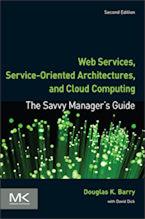Caching for Object-Relational Mapping
Caching is the retention of data, usually in the application, to minimize network traffic flow and/or disk access. With transparent persistence, caching is often set up as part of the application work space. With this cache, there is no need for the application to explicitly translate relational tuples. They move from disk storage automatically into program memory. This is either as a result of a query or from traversing the graph structure. For an animation that demonstrates this caching, see transparent persistence.
The performance cost of using relational DBMSs with objects can be reduced because most object-relational mapping products provide transparent persistence with object programming languages and caching. Caching can help improve performance if the client applications read the same data multiple times for every write. Therefore, caching can, in some cases, reduce the effect of impedance mismatch. It does not, however, eliminate the underlying impedance mismatch between objects in your application and tuples on disk.
Also see cache synchronization.
Context for Caching for Object-Relational Mapping
Related Articles for Caching for Object-Relational Mapping
The Savvy Manager's Guide
Douglas K Barry is also the author of a book that explains Web Services, service-oriented architecture, and Cloud Computing in an easy-to-understand, non-technical manner.
Web Services, Service-Oriented Architectures, and Cloud Computing: The Savvy Manager's Guide (Second Edition)
by Douglas K Barry with David Dick
This is a guide for the savvy manager who wants to capitalize on the wave of change that is occurring with Web Services, service-oriented architecture, and—more recently—Cloud Computing. The changes wrought by these technologies will require both a basic grasp of the technologies and an effective way to deal with how these changes will affect the people who build and use the systems in our organizations. This book covers both issues. Managers at all levels of all organizations must be aware of both the changes that we are now seeing and ways to deal with issues created by those changes.

